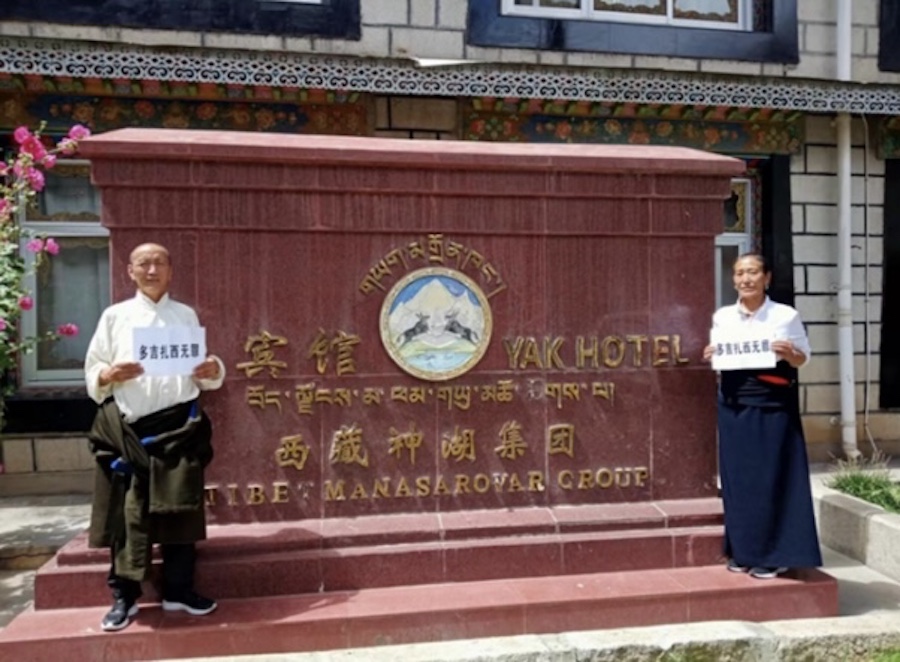Xinhua and several other official Chinese sources have recently released a spate of reports on rapid economic growth in the Tibet Autonomous Region (TAR) over the last two years. These reports are consistent with the pattern observed since the late 1990s: Growth, where it is taking place, is heavily fuelled by central government spending and is overwhelmingly concentrated in the state-sector and/or in urban areas. It therefore bypasses most Tibetans, who are rural and non-salaried. Most of the above average growth is taking place in either construction or in the tertiary sector, which includes trade, transport, services, and government/communist party administration. Productive sectors, such as agriculture, mining, and industry, are either stagnant or growing much slower than the economy in general.
What is exceptional about the growth since 2000 is that it has been fuelled by a sudden increase in government spending by about 75 percent in 2001 alone. As a result the provincial government deficit in 2001 was worth over 70 percent of the provincial GDP. In other words, for every yuan the economy grew in 2001, government spending increased by two yuan. Most of the growth in the economy was therefore related to such spending. This spending was disproportionately channelled into government investment projects, such as the railroad, and into government and Party administration. Investment appears to have excluded the participation of most Tibetans in the process, as there was no reported individual or collective (i.e. non-state) investment in the rural areas. Rural Tibetans have thus been more or less marginalized from rapid growth, and inequalities have increased sharply throughout the province.
Recent reports published by Xinhua estimate that the Gross Domestic Product (GDP) of the Tibet Autonomous Region (TAR) reached 15.8 billion yuan in 2002 (approx. £1.2 billion, Euro/US$2 billion). This is an increase of 12.4 percent from 2001. The reports identified the tertiary sector, construction, and investment as the leading growth areas.
Both the tertiary sector and construction are directly represented in the GDP statistics. The tertiary sector is an amalgam of four categories ranging from transport and trade to finance, social services, and government administration. In 2002 the tertiary sector in TAR was estimated to have reached 8 billion yuan, up by 15.2 percent from 2001, thereby accounting for more than fifty percent of the entire provincial GDP. Construction apparently increased in a similar manner, but the precise values for 2002 have not yet been released in the official reports.
Investment and tourism are not directly represented in the GDP statistics, but rather are split up into several different GDP categories. For instance, much of the category of ‘investment in fixed assets’ is recorded as construction activity in the GDP statistics and thus the increase in both construction and investment overlaps. Overall, investment in the TAR was reported to have increased to 10.5 billion yuan in 2002 (£800 million or euro/US$1.27 billion), up by 26.8 percent from 2001. Most of this investment was in infrastructure, which was reported to have reached 9.1 billion yuan in 2002, up 25 percent from 2001. Infrastructure investment included the construction of key projects such as a power supply project for the Qinghai-Tibet railway, an airport in Nyingtri, and the Lhasa railway station, or certain public utilities such as the construction and expansion of water supply projects and power grids in the rural areas.
Similarly, tourism is mostly broken up into several categories of the tertiary sector, such as transport and telecommunications, or trade and catering. Tourism was reported to have earned 970 million yuan in 2002 (gross; £74.2 million, euro/US$116 million), a rise of 29 per cent from the year before.
In contrast to the robust growth in construction and the tertiary sector, the official reports imply that agriculture and industry have been rather sluggish, growing at far below the GDP growth rates (although the reports claim that the growth has been good). The worst performance was recorded in agriculture (mostly farming and animal husbandry): the value of total agricultural output had increased by only percent in 2002, which was less than one-third of the overall GDP growth of 12.4 percent and almost one-quarter the growth rate of the tertiary sector. In light of the losses in agriculture suffered during the severe winter of 1997/98, part of this growth would represent a recovery of agricultural stocks, particularly of herd sizes. Similarly, industry and mining also grew by only 6.5 percent in 2002, reaching 1.16 billion yuan (£90 million or euro/US$ 140 million), which was only about half of the GDP growth rate.
The slower performance of agriculture is significant because agriculture is by far the main activity of most Tibetans. Agriculture accounted for 72 percent of employment in the entire province in 2001, or more specifically, about 75 percent of the Tibetan employment in the province, and almost 90 percent of rural employment. Given that around 85 percent of Tibetans live in the rural areas and the rural areas are almost exclusively populated by Tibetans, not Chinese, sluggish agricultural growth would have primarily affected the Tibetans.









